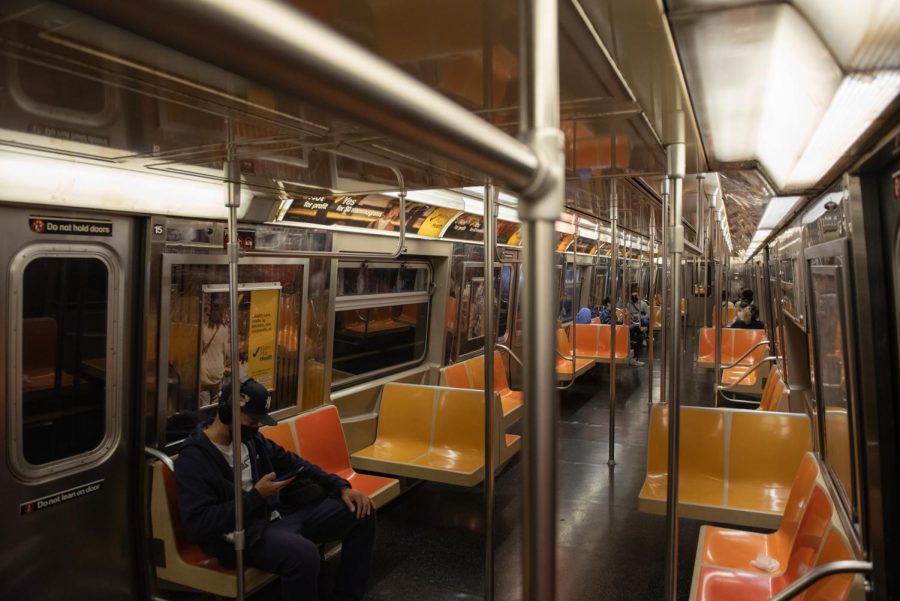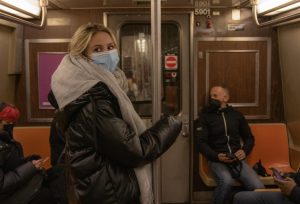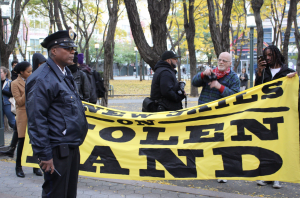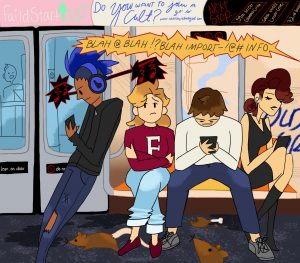MTA To Install Security Cameras in All NYC Subway Cars
Students express their thoughts regarding subway safety following the new security measures implemented
LAUREN MOON
In response to increased safety concerns about the NYC subway system, the MTA will be installing security cameras to monitor every subway car.
September 29, 2022
New York Gov. Kathy Hochul announced on Sept. 20 that the Metropolitan Transportation Authority (MTA) of New York City will install security cameras in every subway car. The measure is funded by a $2 million grant from the Urban Area Security Initiative and is in response to concerns about safety and rising crime in the city’s subway system.
Many of Fordham Lincoln Center’s students use the MTA every day to commute to and from campus, and residential students rely on the MTA to travel around the city. Approximately half of the 1,800 full-time undergraduate students at Lincoln Center are commuters, according to Student Services.
To Vishesh Chawla, Gabelli School of Business at Lincoln Center ’25, vice president of Lincoln Center’s Commuting Students’ Association (CSA) and a commuter from New Jersey, this change is long overdue.
“I think this change was needed 10 years back,” he said.
Previously, Chawla used the PATH trains to commute from New Jersey, and he explained that he felt safer and more comfortable on them than he did on the subway.
“The subways just do not feel safe, considering the crimes that have been happening for so long,” he said.
He noted that the addition of cameras will especially make a difference for students commuting to early-morning or late-evening classes or taking the subway at non peak hours. With cameras installed inside subway cars, “people will have some sort of safety that someone is watching.”
Karolina Kozak, Fordham College at Lincoln Center (FCLC) ’25, a resident in McMahon Hall and a native New Yorker, said she feels that trains have become more dangerous. They expressed that when in a subway car with a potentially threatening individual, cameras would not provide much help in de-escalating the situation.
“I don’t know if I’d feel safer,” they said. “My general feeling of safety on the MTA relies on the people that are in the cars.”
Chawla echoed the need for other people in the subway cars to feel comfortable and highlighted a safety training that CSA conducts, which advises commuters to avoid traveling in empty subway cars. He added that he hopes the new measure will alleviate such safety concerns.
Karina Garcia, FCLC ’25 and a commuter from Brooklyn, also spoke on the necessity of taking extra safety measures.
“Currently, I would say that it is very uncomfortable to be on the train, and I think in recent months, commuters have learned to be more aware of their surroundings,” she said.
Students have expressed mixed opinions on whether the new cameras will effectively decrease the likelihood of a crime being committed on the subway. Kozak added that the MTA has had cameras at stations before but that most of the time they are not on and are rarely monitored.
Kozak hopes that the installation of cameras in subway cars will lead to safer conditions, but she believes that more effective security measures can be implemented.
“In the past, cameras at the stations haven’t really been effective at all,” they said.
Kozak hopes that the installation of cameras in subway cars will lead to safer conditions, but she believes that more effective security measures can be implemented.
Desara Murati, FCLC ’25 and a commuter from downtown Brooklyn, believes that the addition of cameras on the train cars is a step in the right direction but does not think it is the overall solution.
“I don’t think it will completely stop the crimes that have been happening or how people have been getting pushed onto the tracks more recently,” she said. “But I think it’s a safety net. People will be maybe more afraid to do these things.”
“Cameras are good for catching people, not for preventing crime” Desara Murati, FCLC ’25
Murati also noted that the installation of cameras does not combat the root issue of crime and believes that there should be more preventative measures added.
“Cameras are good for catching people, not for preventing crime,” she said.
Garcia believes that installing security cameras would make the MTA much safer and create a more comfortable experience for commuters. She also noted that she believes the cameras will hold people more accountable for their actions if they know they are being recorded.
“I do think it’s a step towards the right direction, but I don’t think that it is going to solve the overall issue of using the train system,” she said. “I think there needs to be a lot more put into place to make people feel safe and comfortable while using the train every day.”
Robert Dineen, director of Public Safety, shared that the office provides all incoming students with safety tips while traveling on the subway and issues public safety advisories and reminders on mass transit to the university community during the school year.
He expressed satisfaction with the new safety measure, praising it as an effective investigative tool for law enforcement when they review camera footage after an incident. Dineen also noted that cameras would serve as a deterrent for individuals intent on harming others.
“I believe the subway car cameras will help to restore riders’ sense of safety and feeling of being protected,” he said.
Dineen hopes that the cameras — alongside law enforcement — will reduce crime in the subway system.
Dineen hopes that the cameras — alongside law enforcement — will reduce crime in the subway system.
“Subway car cameras, along with our elected leaders and law enforcement officials, and service providers, working together on developing strategies and solutions to address crime and other social issues in the subway, will go a long way in affecting positive change relative to subway safety,” he said.
Regardless of changes to the MTA’s security systems, Fordham students, especially commuters, will continue to rely on the subway system.
“Whether the cameras are there or not, it’s not going to change the fact that I need to take the subway to get from Point A to Point B,” Kozak said.















